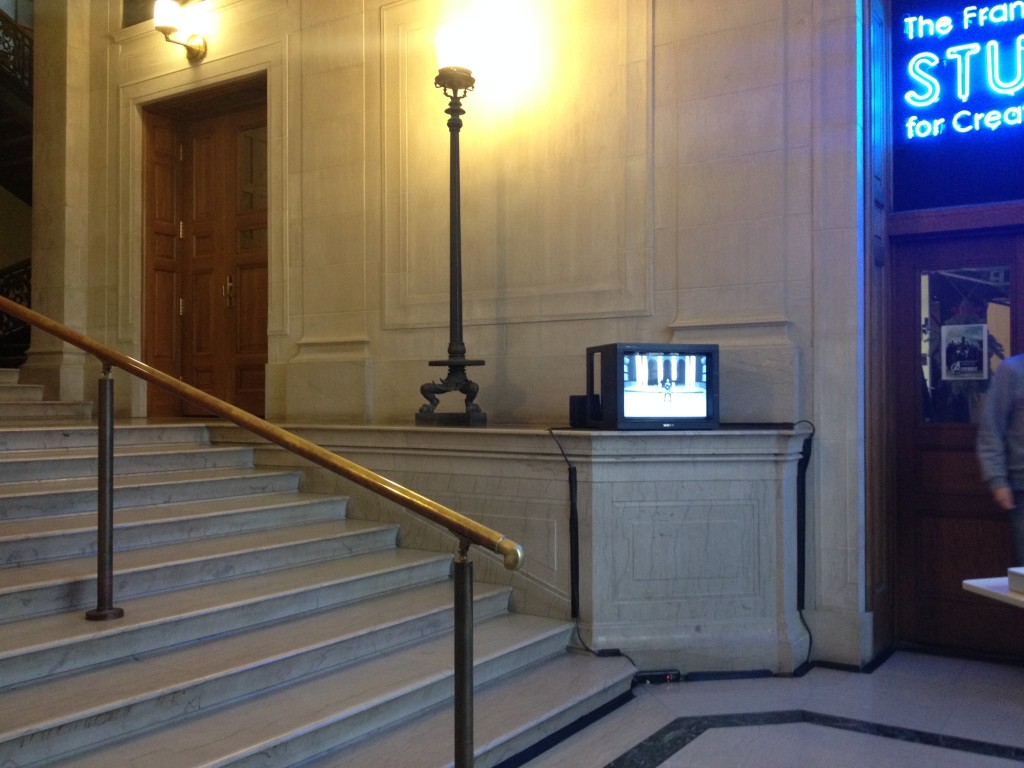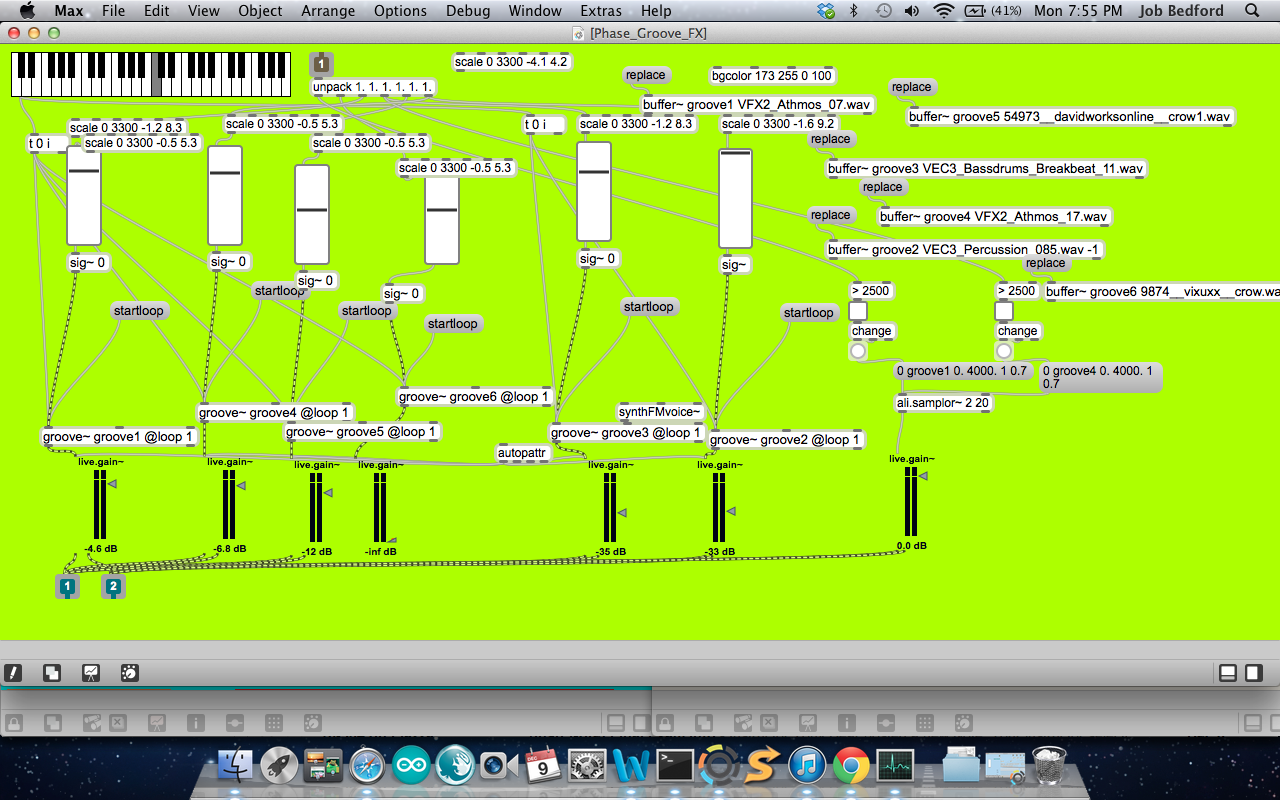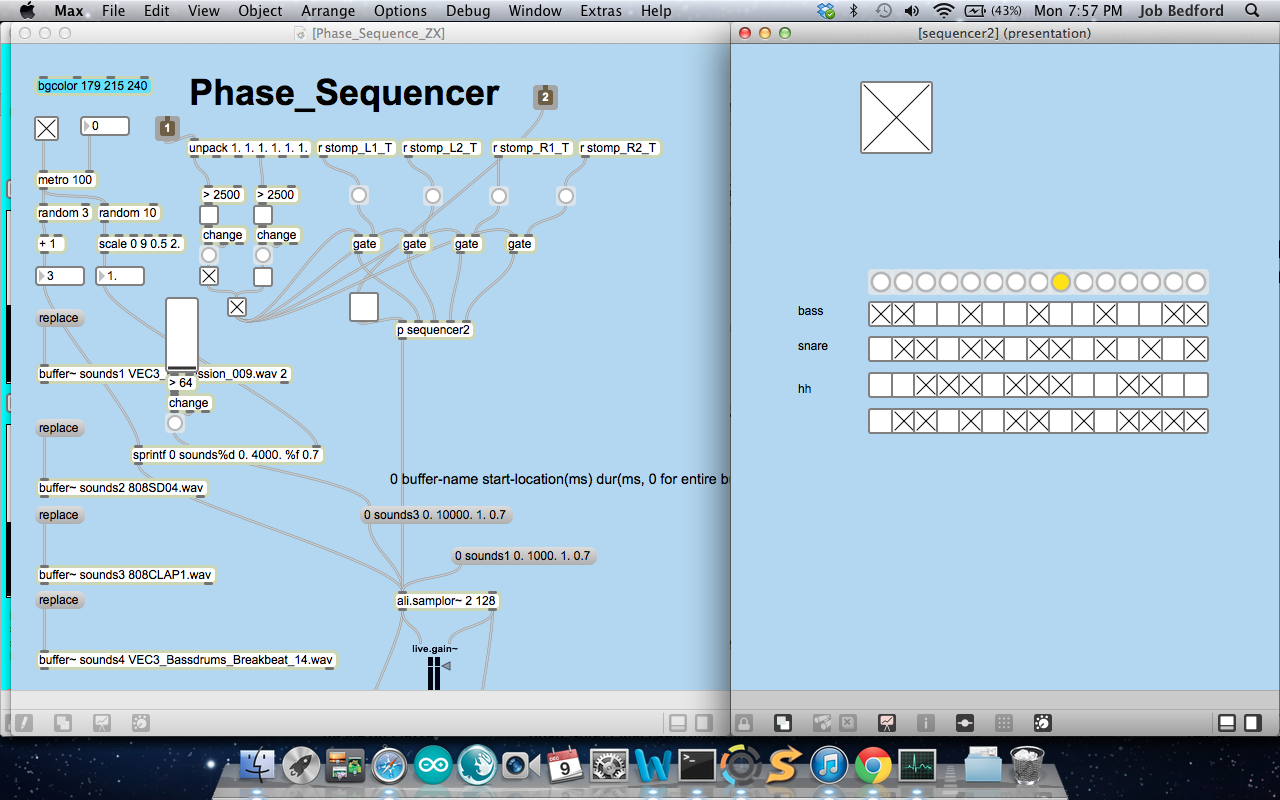Final Project: Through the Lens – Patra Virasathienpornkul
Through the Lens
Through the Lens is a hybrid instrument that involves a piece of paper, a pen, and an OLED transparent display. My goal for this project is to understand the possibilities and the limitations of the device, and to come up with applications that are interesting, educational, and entertaining.
Bouncing Ball from Patt Vira
Steps:
- Draw inside the pre-calibrated section on a piece of paper (that is placed on top of a Wacom tablet) using a Wacom Inkling Sketch Pen.
- Place the OLED transparent display on top of the paper .
- Watch the graphics on the display interact with the drawings.
What did I learn?
From this project, I realized that I put a majority of my time trying to understand the basic use of the transparent display and how to get all the technology to work properly. Even though I wish I could have created more applications and presented my project beyond the proof of concept, I am now at the comfortable point where I can use the knowledge that I have to create interesting applications based on my own imagination and the feedback that I received from the outsiders perspective. The comments I received during both the final presentation and the show are invaluable. One important point I took away is that no one cares about the technology – what matters is the thing you do with the technology.
How can the project be improved?
The 4D System transparent display has a lot of potential, and I believe I have only tackled a small section of the possibilities. The feedback I received during the final presentation and the show is very helpful, and widen the scope of project ideas I can do with the knowledge I currently have. Here are the two directions I like to explore further.
1) Increase the area on a piece of paper to allow a bigger space for people to draw.
2) Use the display as a lens (think google glass)
I’d also like to get rid of the graphics tablet and make the display portable by exploring alternative ways of acquiring the pen strokes.
Acknowledgement:
- This project is inspired by Glassified by the Fluid Interfaces Group at the MIT Media Lab.
- Special thanks to Ali Momeni and Anirudh Sharma.
- Thanks to Golan Levin and the Frank-Ratchye STUDIO for Creative Inquiry grant for allowing me to purchase the 4D systems OLED transparent display.





